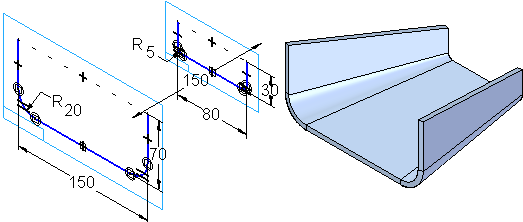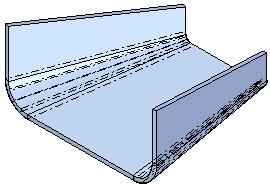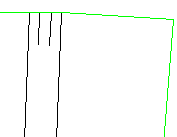 Lofted Flange command
Lofted Flange command
 Lofted Flange command
Lofted Flange command
Constructs a flange by fitting a feature through two open profiles. The profiles must be on parallel reference planes. Certain types of lofted flanges cannot be flattened. Only lofted flanges that consist of planes, partial cylinders, and partial cones can be flattened.
The Lofted Flange command is intended for base feature creation but may work as a secondary feature in some cases.

The Bending Method page on the Lofted Flange dialog box allows you to define incremental bends for the bends in the lofted flange. For example, you can specify that five incremental bends are created for each bend on a lofted flange.

You can set the number of bends. For the lofted flange to flatten, the arc angle between the two cross sections must match.
The Bending Method page also allows you to specify bend index marks when you save the sheet metal file as a flat pattern. These bend index marks are short lines connected to the edge of the part along the bend that help align the metal with the press brake.
Each bend is represented as a bend centerline in the 3D model and is displayed with the edge color and a centerline style. In Draft, these bend lines display as centerlines in the visible edge color. You can apply different centerline styles to bends that bend upward and to bends that bend downward. The centerline style options can be set on the Annotation page of the Options dialog box or the Drawing View Properties dialog box.

Note:
To export the bend index marks to the .DXF file, on the Layers page of the Save as Flat DXF Options dialog box, select the Export to DXF option for the Etch Feature entry.